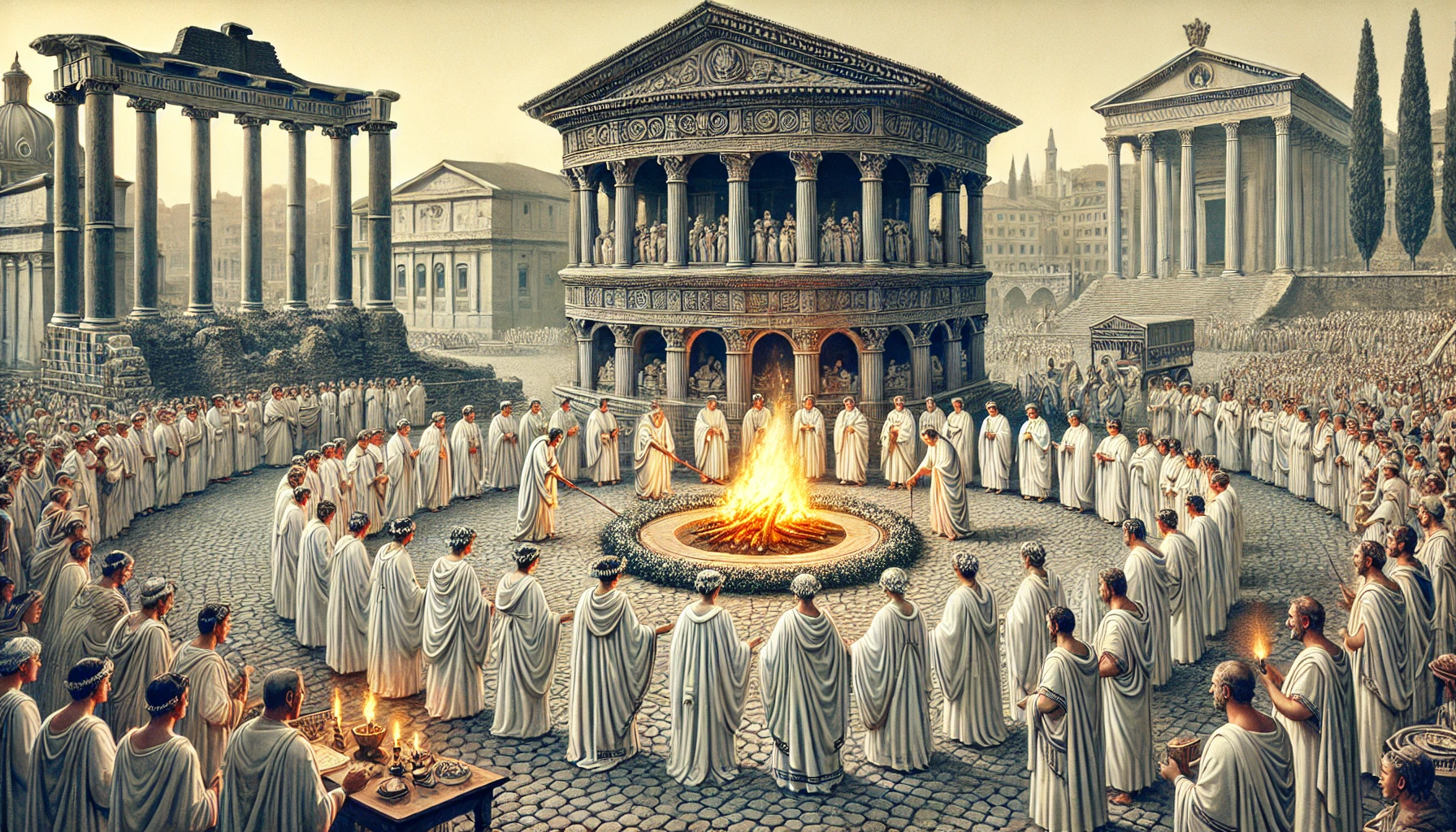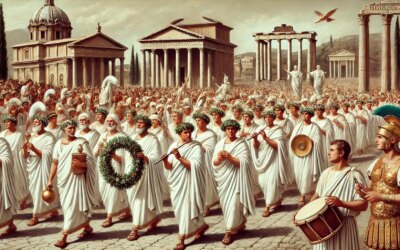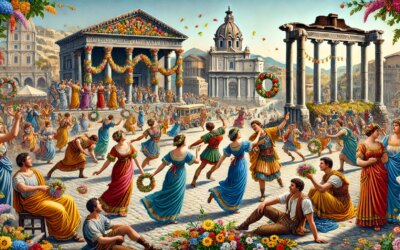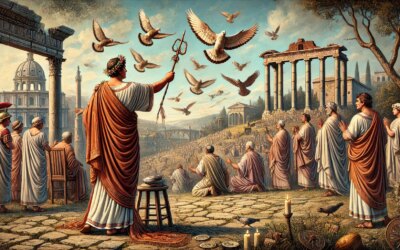The Flame That Defined a Civilization
At the heart of the Roman Forum, within the circular Temple of Vesta, a fire burned without ceasing—a flame that symbolized the life, power, and continuity of Rome itself. This fire, watched over by the Vestal Virgins, was far more than a religious relic. It was a sacred embodiment of the Roman spirit, a sign of divine favor and eternal endurance. In the 1st century BCE, amid the waning days of the Republic, this ritual still held immense importance—one of the few unchanging institutions in a city of political flux.
The Temple of Vesta: Form and Function
Unique among Roman temples, the Temple of Vesta was round, echoing the shape of early Roman huts and representing the hearth at the center of every Roman household. This architectural design underscored the temple’s role: not as a place of congregational worship, but as a sacred hearth of the entire Roman state. The temple was small but heavily guarded, with a thatched roof (later replaced with tile), six to twenty columns, and a singular focus—the eternal fire of Vesta, goddess of the hearth, home, and domestic stability.
The Vestal Virgins: Rome’s Sacred Women
Chosen between the ages of six and ten from patrician families, the Vestal Virgins were inducted into a 30-year commitment that began with ten years of training, followed by ten years of active duty, and ten years of teaching new initiates. Their primary duty: to maintain the sacred flame within the temple. If the fire ever went out, it was considered a grave omen for the Roman state, and the Vestals responsible could be scourged—a rare exception to their otherwise sacrosanct status.
Beyond tending the flame, Vestals participated in major public rites, preserved sacred objects within the temple, and held legal privileges unheard of for other Roman women. They could own property, make wills, and even free prisoners with a mere touch. The dignity of the office was immense—but so was the risk of failure.
Purity, Privilege, and Peril
Vestal Virgins were sworn to thirty years of chastity. The loss of virginity during this term was seen not merely as a personal failure but as a religious and civic catastrophe. The punishment was brutal: the offending Vestal was buried alive in a sealed chamber, while her lover was flogged to death. These extreme penalties underscored the symbolic weight of the Vestals’ purity—it was linked to the wellbeing of the entire city.
Despite these strictures, the Vestals enjoyed immense respect and ceremonial roles usually denied to women. They appeared in triumphal processions, sat in places of honor at games, and had their own reserved seating in theaters. The balance of reverence and restriction reflected the paradox of female power in Roman society—sanctioned only when cloaked in religious function.
Rituals and Sacred Duties
In addition to keeping the flame alight, the Vestals prepared ritual substances like the mola salsa, a salted flour mixture used in sacrifices. They tended to the sacred objects in the temple’s penus Vestae, which included the Palladium, a divine image believed to protect Rome, said to have been brought from Troy by Aeneas.
One of the year’s most significant ceremonies was the Vestalia (June 7–15), during which the temple was opened to the public, and Roman matrons brought offerings of food and incense. The final day involved a ritual cleansing of the temple, where sacred relics were temporarily removed while the temple was swept—symbolizing renewal and purification.
The Vestals in Times of Crisis
Throughout Roman history, Vestals played symbolic roles in moments of turmoil. During the civil wars of the late Republic, their presence at ceremonies reinforced the continuity of Roman religious tradition, even as politics frayed. In 83 BCE, when Sulla marched on Rome, the Vestals appealed for clemency for some of his enemies—a rare instance of priestesses influencing politics. The aura of their role often shielded them from harm, even in times of chaos.
Decline and Transformation
The Vestal order survived well into the Imperial era. Emperors like Augustus re-emphasized their importance, tying them to his program of moral renewal. However, as Christianity gained power, the pagan priesthoods declined. In 394 CE, Emperor Theodosius I extinguished the sacred flame and formally dissolved the Vestal order. The temple fell into disuse, and the site was gradually repurposed or buried beneath the medieval city.
Legacy in Stone and Spirit
Today, the ruins of the Temple of Vesta still stand in the Roman Forum, a circular skeleton of columns that once sheltered the holiest flame of Rome. The memory of the Vestal Virgins endures—not just as a relic of ancient religion, but as a symbol of service, tradition, and the enduring power of ritual in civic life. Their legacy flickers still, like the flame they so faithfully tended for centuries.






